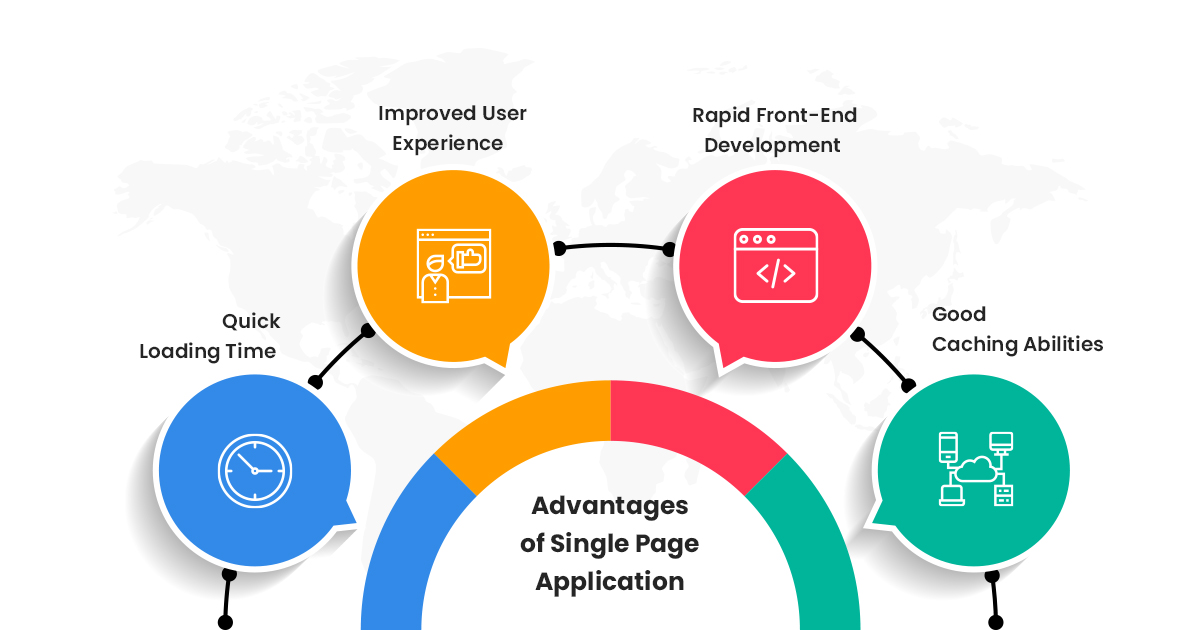In the rapidly evolving landscape of web development, ReactJS stands out as a game-changer. Its ability to create dynamic and interactive user interfaces has made it immensely popular among developers and businesses alike. One of the key applications of ReactJS is in the creation of Single Page Applications (SPAs). This article delves into the benefits and challenges associated with ReactJS in the realm of Single Page Applications.
Understanding ReactJS and Single Page Applications
What is ReactJS?
ReactJS, developed by Facebook, is a JavaScript library for building user interfaces, particularly single-page applications where fluid user experiences are paramount.
What are Single Page Applications (SPAs)?
SPAs are web applications that load a single HTML page and update the content dynamically as the user interacts with the app. This seamless user experience is achieved through ReactJS.
Benefits of Using ReactJS for Single Page Applications
Speed and Responsiveness
ReactJS enhances the speed of SPAs by enabling virtual DOM, which significantly reduces the need for frequent direct manipulations of the actual DOM. This results in a more responsive user interface.
Reusable Components
ReactJS allows developers to create modular and reusable components. This modularity simplifies the development process and ensures consistency across the application.
SEO-Friendly SPAs
Contrary to the common belief that SPAs lack SEO optimization, ReactJS facilitates server-side rendering, making SPAs visible to search engines and improving their search engine optimization.
Enhanced User Experience
ReactJS offers a smooth user experience by enabling dynamic content updates without reloading the entire page. This feature is pivotal for applications where real-time data updates are crucial.
Challenges Faced in ReactJS Development for SPAs
Complex State Management
Managing state in large SPAs can be challenging. ReactJS doesn’t provide built-in solutions for this, leading developers to implement additional libraries like Redux for effective state management.
SEO Optimization Challenges
Although ReactJS enables server-side rendering, SEO optimization for SPAs remains a challenge. Proper implementation and understanding of SEO best practices are necessary to overcome this challenge.
Steeper Learning Curve
For developers new to ReactJS, mastering the library and its ecosystem can be time-consuming. However, the wealth of online resources and a supportive community mitigate this challenge.
Performance Optimization
While ReactJS itself is fast, inefficiently designed components or improper usage can lead to performance bottlenecks. Optimizing components and employing best practices is essential for maintaining optimal performance.
Conclusion
ReactJS has revolutionized web development, enabling the creation of dynamic and responsive Single Page Applications (SPAs). Its component-based architecture fosters modularity and reusability, enhancing developer productivity. However, challenges like SEO optimization and complex state management persist. Despite hurdles, ReactJS continues to dominate the SPA landscape, offering a robust framework for immersive user experiences. To navigate these complexities effectively, partnering with a reputable ReactJS development company is essential. Their expertise ensures the harnessing of ReactJS benefits while mitigating challenges, ensuring the seamless creation of cutting-edge SPAs.
FAQs (Frequently Asked Questions)
1: Can ReactJS be used for traditional multi-page applications as well?
Yes, ReactJS can be used for both single-page applications and traditional multi-page applications, offering flexibility to developers based on project requirements.
2: What are some popular companies using ReactJS for their SPAs?
Several prominent companies, including Facebook, Instagram, Airbnb, and WhatsApp, utilize ReactJS for their single-page applications, showcasing its robustness and scalability.
3: Is it necessary to use Redux for state management in ReactJS applications?
While Redux is a popular choice, ReactJS provides its own state management system. The decision to use Redux depends on the complexity of the application and developer preferences.
4: How can ReactJS SPAs be optimized for mobile devices?
ReactJS SPAs can be optimized for mobile devices by employing responsive design principles, optimizing images and media, and utilizing React Native for native mobile app development.
5: Is it possible to integrate ReactJS SPAs with backend technologies like Node.js and Express.js?
Yes, ReactJS SPAs can be seamlessly integrated with backend technologies like Node.js and Express.js, enabling the development of full-stack applications with JavaScript.














